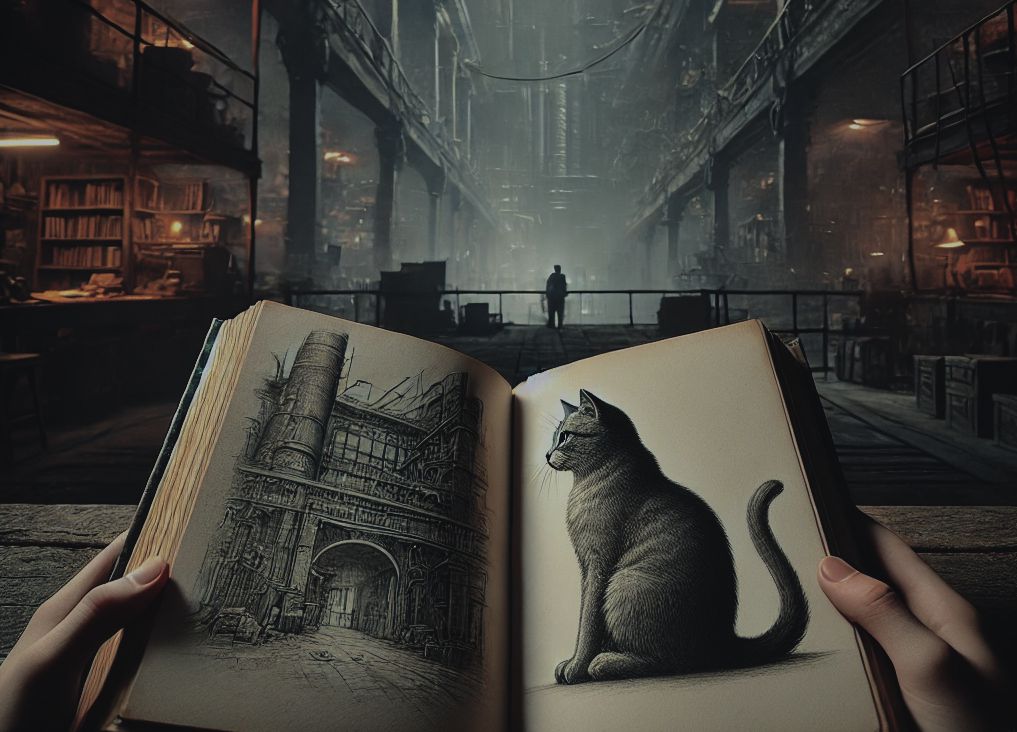The Absurdity Of Cats
In the year 2158, when the air was filtered through massive domes and the soil had long turned to dust, Camus sat in his cubicle, scrolling through ancient archives on his screen. It was his daily assignment: cataloging irrelevant relics from the pre-Sterile Age. The task was monotonous, but he preferred it over the alternative—poking through soil samples in search of non-existent “bio-life.”
Today, the archive randomly pulled up something called “A Guide to Feline Care.” Camus blinked, scanning the text with an eyebrow raised. The word “feline” pinged no immediate relevance in his mind. Like most citizens of the Domes, he was vaguely aware of “animals,” though they were mostly referred to as long-gone nuisances.
He leaned in closer, trying to grasp what this “cat” could have been. His fingers twitched as he read aloud.
“The cat is a domestic species, often kept as a pet,” he began, squinting as if speaking the words would give them clarity. “It is known for its independent nature and ability to purr, a sound produced by vibrating vocal cords.”
Purring? Camus paused, trying to imagine what that could be. The closest sound he could think of was the hum of the air-purifiers. Surely, that wasn’t what this extinct “cat” did? But the text continued with even more perplexing facts.
“It is common for cats to sleep 12 to 16 hours a day.”
Camus chuckled. Sixteen hours? In the Domes, citizens were expected to sleep six hours, then return to their tasks. Sleep was rationed, productive time maximized. Who in their right mind would keep a being around that spent the majority of its time unconscious?
The more he read, the stranger it got.
“Cats require a litter box, a tray filled with absorbent material, for their waste.”
Waste? He nearly laughed out loud. The notion of an inefficient biological being that required a separate containment area for its “waste” was so foreign, so hilariously impractical. In the Domes, waste was automatically absorbed and sanitized. The idea of a small, furry creature actively producing such mess… why would anyone allow that?
He kept scrolling. “Cats are also known to exhibit behavior called ‘kneading,’ where they press their paws rhythmically against a soft surface.”
Camus snorted. Kneading? This was either some elaborate joke or the pre-Sterile Age humans had truly lived in chaos. Who had time to sit around watching an organism… paw at things?
And then there was the food. “Cats are obligate carnivores, meaning their diet consists primarily of meat.”
At this, Camus recoiled. Meat! It was almost mythic, the idea that one would eat the flesh of another living thing. Protein today came in neatly packaged bars, designed in labs for efficiency and ease of consumption. No, the humans of the past were not only wasteful; they were savage.
The final detail, however, took the cake. “Despite their aloof nature, cats can be affectionate companions and are often regarded as cherished members of the household.”
Affectionate? Camus frowned. The only affection he knew was the occasional message from Dome Administration, praising citizens for surpassing their productivity quotas. What good was the affection of a creature that slept all day and clawed at your furniture? He glanced at the accompanying image: a small, soft creature with two triangular ears and wide eyes that seemed to glow with mischief.
Closing the archive, Camus leaned back in his chair, shaking his head. “Cats,” he muttered to himself, chuckling.
“Imagine keeping a useless organism like that around… Good thing we’re more evolved.”
And with that, he filed the document under “Irrelevant: Pre-Sterile Age,” completely unaware that, in a simpler time, some might have seen his sterile, efficient life and felt the same way.

